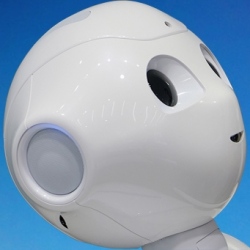
Quanergy held a press conference to announce the S3, a solid-state LIDAR system designed primarily to bring versatile, comprehensive, and affordable sensing to autonomous cars. The S3 is small, has no moving parts, and in production volume will be US $250 or less.
According to Quanergy, the S3 is better than traditional LIDAR systems in every single way, and will make it easier and cheaper for robots of all kinds to sense what’s going on in the world around them.
LIDAR systems work by firing laser pulses out into the world and then watching to see if the light reflects off of something. By starting a timer when the pulse goes out and then stopping the timer when the sensor sees a reflection, the LIDAR can do some math to figure out how far away the source of the reflection is. And by keeping careful track of where it’s pointing the laser, the LIDAR gets all of the data that it needs to place the point in 3D space.
In order to build up a complete view of the world, a LIDAR needs to send out laser pulses all over the place. The way to do it is to have one laser and one sensor and them move them both around a whole bunch, usually by scanning the whole LIDAR unit up and down or spinning it in a circle or both. You’ve probably seen these things whirling around on the top of autonomous cars.
And they work fine, but they’ve got some problems: namely, they’re kind of big, they’re stupendously expensive, and because they have to be moving all the time, they’re not really reliable enough for consumer use.
This is where Quanergy comes in: its solid-state LIDAR has no moving parts. The practical applications for this capability are significant, especially for autonomous vehicles.
